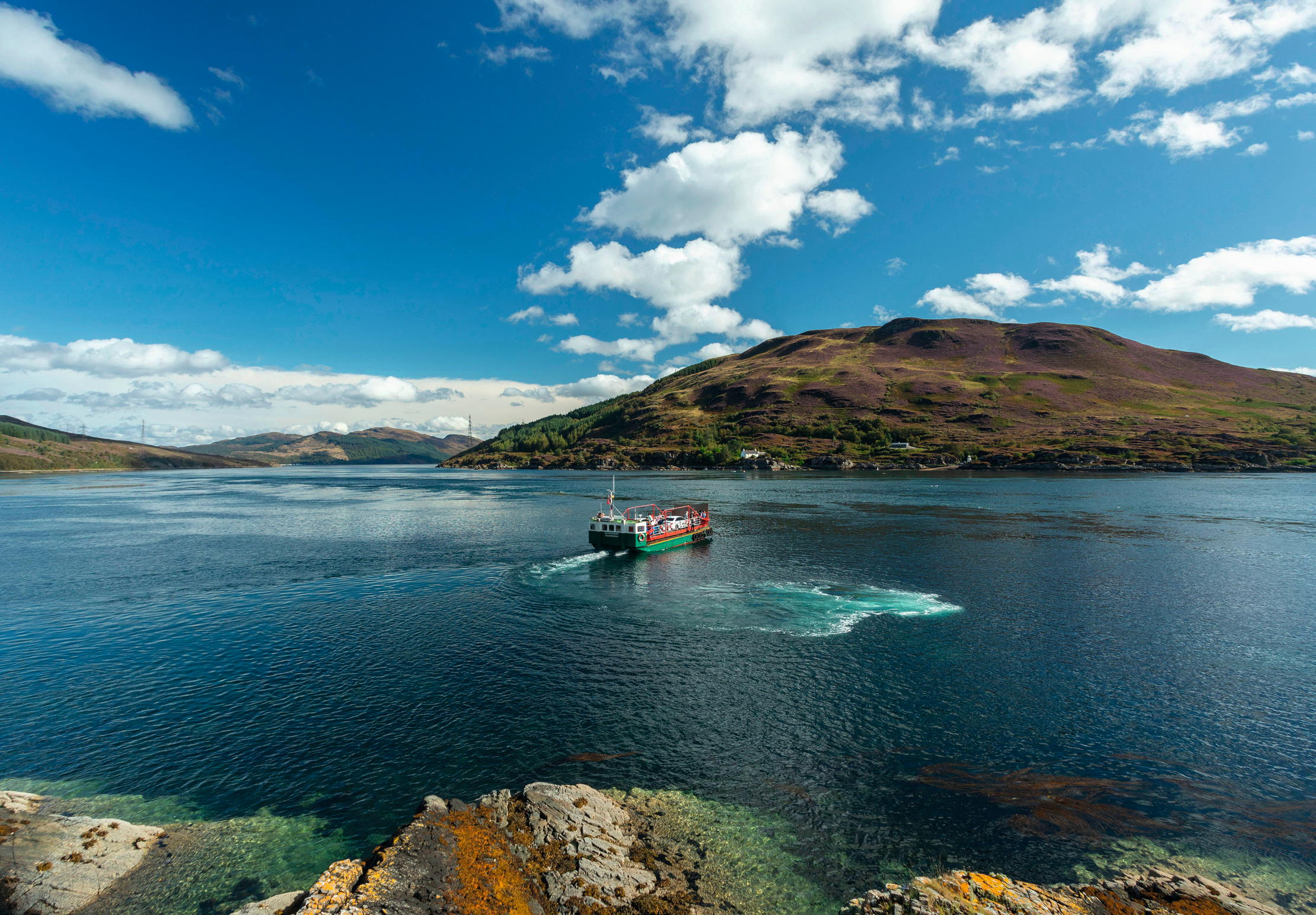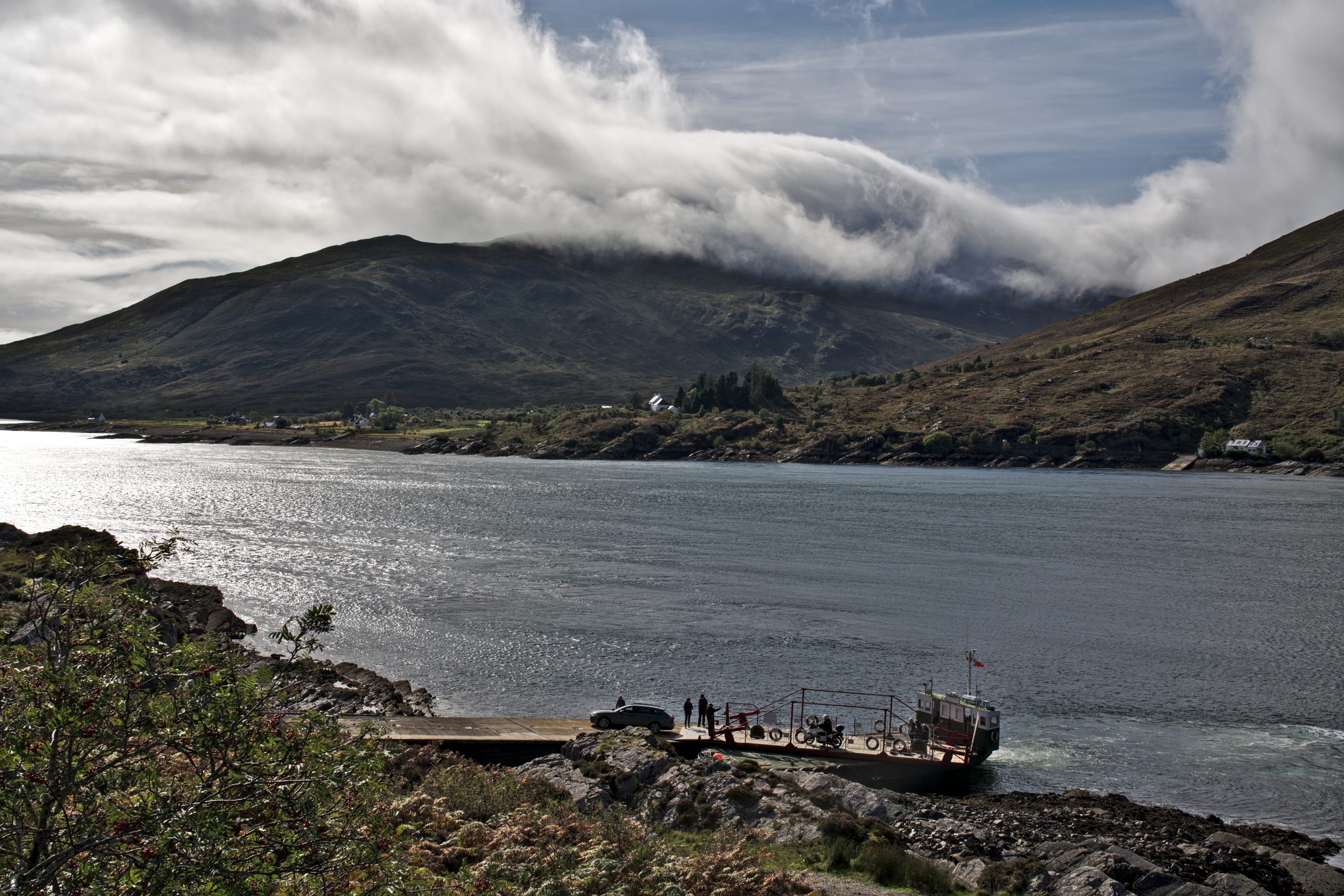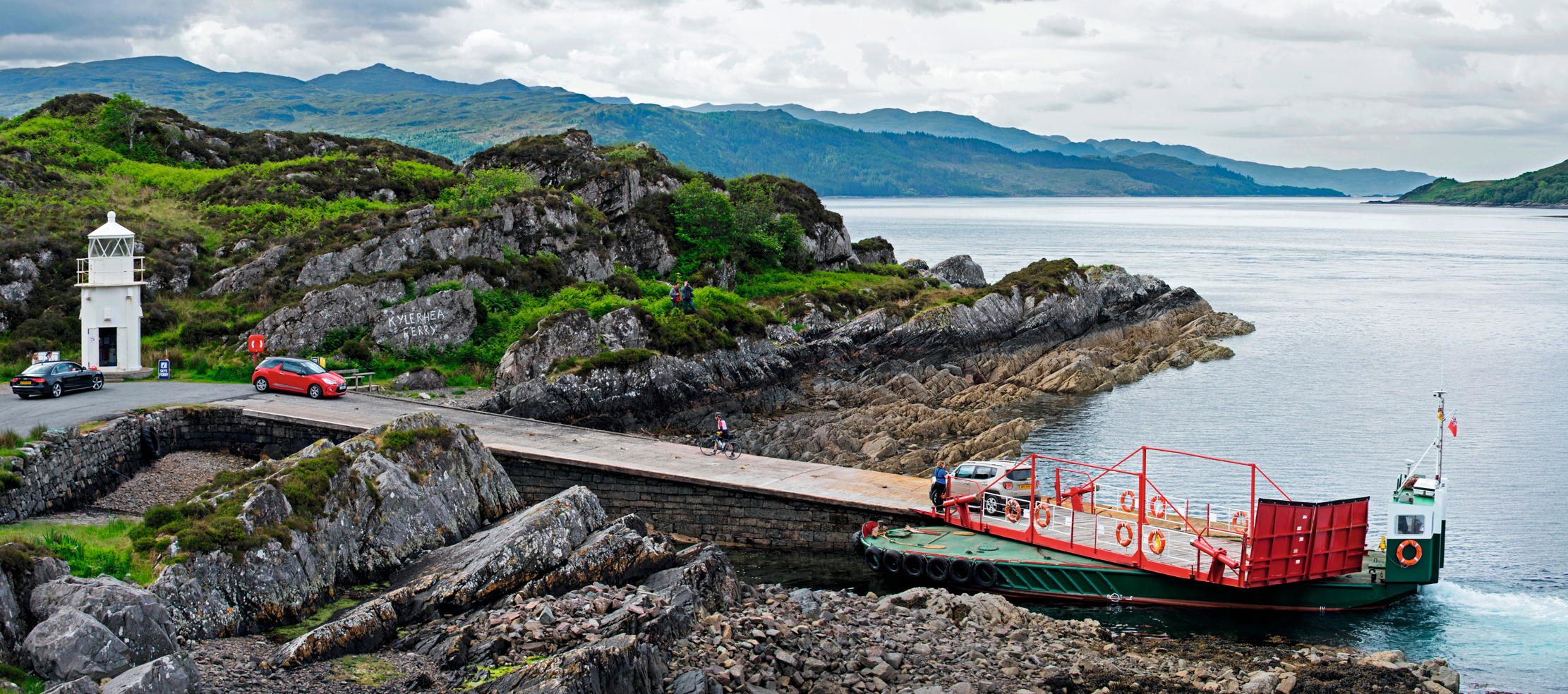
When Dr Samuel Johnson and James Boswell came down out of the hills to the west coast and Loch Duich on their Highland tour in September 1773, they paused at Auchnasheal. You won’t find it on today’s maps, but, then, Auchnasheal was ‘a kind of rural village’ of 20 huts. There they rested and the good doctor divvied out a shilling’s worth of copper coins to the children. For the modern traveller reaching this point, near Shiel Bridge, it is tempting to follow the flow of traffic hurrying along the ‘Road to the Isles’ to Kyle of Lochalsh and over the bridge to the Isle of Skye. Yet a more leisurely deviation to the left onto the single-track road to Glenelg, followed by Johnson and Boswell, will pay handsome dividends and, from spring to autumn, will still allow the traveller to reach the Isle of Skye by means of a small car ferry.
The old military road climbs Mam Ratagan, giving fine views of Loch Duich below. Then, it descends gently through Glen More to the pretty village of Glenelg, past the hollow-eyed ruins of Bernera Barracks, built between the ’15 and the ’45 rebellions to subdue the locality. Spotting the barracks after his incommodious passage through the hills, poor Bozzy confessed he ‘looked at them wistfully, as soldiers have always everything in the best order’.
Reaching the road end in Glenelg, you will find a former inn, a slipway and, criss-crossing the half mile between the mainland and Skye, the world’s last surviving manually operated turntable car ferry. This stretch of treacherous water is called Kyle Rhea. Its name may be derived from the Gaelic for the ‘king’s narrows’, for it was through here, tradition has it, that King Haakon of Norway sailed his fleet of 120 ships to challenge Alexander III, King of Scots, for ownership of the Hebrides in 1263.
For 90 years, car ferries have worked this Highland Bosphorous. Successive boats were independently owned and operated by private skippers, but, in 2005, the last of these, Roddy MacLeod, put the MV Glenachulish up for sale when tolls came off the Skye bridge. The Glenelg community faced a dilemma. Either it allowed the village to become a dead end — and possibly the shop and hotel to die and the school to close — or it took on running the ferry, which many saw as a lifeline.

A poll of the 250 residents found a majority in favour of forming the Isle of Skye Ferry Community Interest Company, a social enterprise that raised £200,000 via the National Lottery, Highlands and Islands Enterprise grants and private fundraising to buy the ferry. In the hands of a dedicated and professional band of enthusiasts, the company has come a long way since then. Last year, it won the Scottish and then UK Social Enterprise of the Year awards, beating 131,000 other contenders.
In the days when the Highlands’ greatest export was the area’s black cattle, Kyle Rhea presented a significant hurdle to the droves of cattle making the late-summer journey to market trysts at Crieff and Falkirk. Before the coming of steamships and the railways, 8,000 cattle from Skye and the outer isles would be swum across the strait. The drovers linked the beasts in groups of six with a rope noosed around the lower jaw of the beast behind, under its tongue to prevent drowning, attached to the tail of the beast in front. The lead animal was haltered and held by a man in the stern of a rowing boat. Around high-water slack tide, up to 400 cattle could cross. On each bank, there is an eddy that flows against the tide. Skilled mariners would use these to come into shore, but less adroit oarsmen could find their boats capsized. The cattle might be swept two miles away. Some became panic stricken and bit off the tail of the beast in front or, desperate to end their agony, rolled onto their backs to drown. Swimming the cattle like this was seen as ‘an abominably cruel method’ by some witnesses.

By the 1820s, large, open rowing boats, wide beamed and up to 50ft long, were being used to ferry 20 cattle fastened to rings along the gunwale and packed tightly to avoid movement. The slipways were built in 1821, the southern one cobbled to allow an easier scramble for the beasts, and cattle continued to cross until 1906, although latterly in much smaller numbers. When John Keay re-created a drove of 30 cattle to Falkirk in October 1981, the local officer of the SSPCA vetoed swimming the cattle over and the car ferry was pressed into service as livestock transport. The old coal-fired ferry between Kyle of Lochalsh and Portree had a sign that read ‘this cabin has accommodation for 90 third class passengers when not occupied by sheep, cattle, cargo or other encumbrances’.
Exquisite houses, the beauty of Nature, and how to get the most from your life, straight to your inbox.
A. R. B. Haldane, a historian of droving in Scotland, noted that ‘the crossing of Kyle Rhea even in modern times is no light undertaking… To one watching from the hill overlooking the Kyle how the tide sweeps like a great river northward… or how when the current sets south, tide and wind meet in Glenelg Bay in a welter of white and angry water, it may well seem that this crossing of the Kyle marks, as little else could do, the hardihood, the courage and the skill of the drovers of Scotland’.
Although it may no longer ship many cattle, the six-car Kyle Rhea ferry carries 35,000 passengers and 12,000 cars each season, navigating this crossing every 20 minutes unless there is a strong northerly wind, which can take the tide to 12 knots when blowing in the same direction. The 55-year-old MV Glenachulish was originally built in Troon for the Ballachulish crossing and the manually operated turntable was designed in the Highlands to allow ferries to disembark vehicles onto a slipway at any height of tide.
Hospitality in Glenelg has improved since the days of Boswell and Johnson. They found ‘no meat, no milk, no bread, no eggs, no wine… whisky we might have and… at last they caught a fowl and killed it’. Retiring for the night in the inn, Johnson slept in his riding coat on a pile of hay, but Boswell ‘being more delicate, laid himself sheets with hay over and under him, and lay in linen like a gentleman’.
Fifty years later, things hadn’t improved. Dr John MacCulloch, Sir Walter Scott’s correspondent, waited four hours for breakfast on the promise of eggs and then got herring. Next day, he was stung with a bill for six shillings for his horse Roger’s grazing, when the horse had simply been turned loose on the shore. Passing through the kyle in a customs launch two years later, MacCulloch told the officers of his misadventure. They headed inshore and, on the assumption that every Highland hostelry had its store of illicit whisky, raided the inn. The innkeepers howled and the doctor enjoyed himself.
Now, the cosy shore station café and shop provide a warm reception, as does the Glenelg Inn in the village. Spot, the border collie ferry dog, welcomes visitors onto the boat and pulls in the mooring lines. Dolphins often accompany MV Glenachulish. Humpback whales and otters are seen from her decks and, above her, sea eagles carry their prey (including the odd lamb) to a nest in an old Scots pine on the shore. Several generations of the same families answer the call to man the ferry. Part-time skipper Donnie ‘The Van’ MacDonald (Donovan to his friends) works with his son on the boat and says it is a rite of passage for a lot of young people from the village — he enjoys watching how interaction with passengers helps them shed youthful shyness.
Mr MacDonald recalls crewing when Murdo ‘The Ferry’ Mackenzie, a previous owner-skipper, was distracted mid passage by the important business of rolling up his trouser leg to show him his varicose veins. The pair looked up to find they were being swept into Glenelg Bay on a strong tide and there was no remedy other than to moor there. A dinghy ferried the passengers to Mrs MacDonald’s tea shop, where they were treated to home baking until the tide turned. Worse things happen at sea.
Visit www.skyeferry.co.uk